Reading e-books has long been a part of everyone's life. The convenient and lightweight electronic books are more portable, and e-readers are not limited to traditional devices such as computers and mobile phones. Emerging e-book readers are gradually accepted by us. E-ink electronic ink technology is one of the most famous products nowadays. His appearance makes e-book readers no longer a single LCD screen.
When I mentioned the E-ink electronic ink screen, everyone responded by "Oh, that is, the screen that can only display black and white gray. Amazon Kindle e-book is using this."
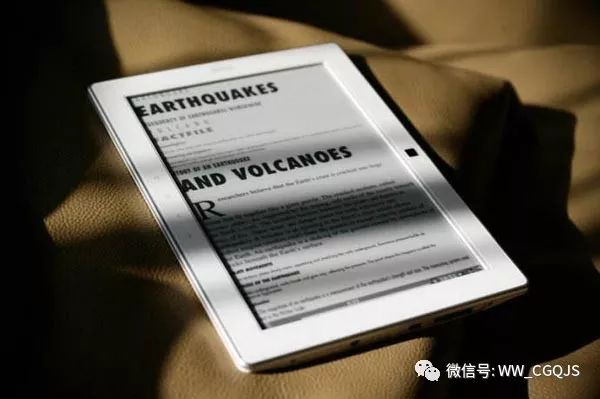
The electronic ink screen is close to the reading experience of paper books. The electronic book represented by Kindle has become a digital device for many reading enthusiasts to come out. Various electronic ink screen devices with power saving and eye protection are beginning to appear. . After so many years of development, the electronic ink screen seems to be the beginning of its birth. From the perspective of ordinary consumers, it has not become mainstream, but it has never left.
The origin of E-link technology
E-ink screen technology dates back to 1996. It is based on a study by the MIT Media Lab, which uses electrophoresis technology (EPD) to display images that look very close to traditional paper. Therefore, it has also become "electronic paper." In 1997, Joseph Jacobson, a professor at the Massachusetts Institute of Technology, founded E Ink to start commercializing e-paper technology, which became the mainstream of e-paper.
E-ink is very similar to ink used in printing, and is made of pigments, which is why we see that electronic ink screens and traditional papers display similar results. Electronic inks are usually made into thin films and consist of a large number of microcapsules, which are only the diameter of human hair. The black and white spheres in the microcapsules are pigment particles with different charges. In the initial state, the pigment particles are suspended in the microcapsules. When a certain direction of electric field is applied, the corresponding pigment particles are pushed to the top, and the microcapsules will display differently. The color, while the microcapsules of different colors make up a variety of texts and patterns.
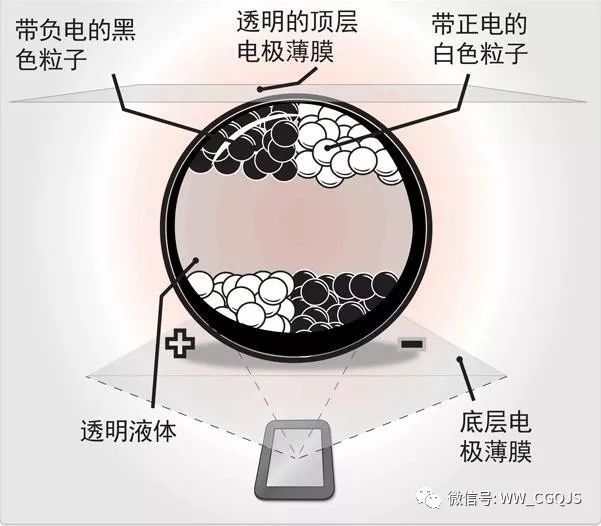
The basic structure of the electronic ink screen is shown below:
1. upper layer; 2. transparent electrode layer; 3. transparent microcapsule; 4. positively charged white pigment; 5. negatively charged black pigment; 6. transparent liquid (oil); 7. electrode pixel layer; 8. substrate; 9. light; 11. Black
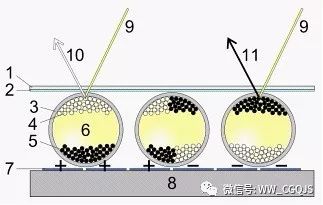
The electronic ink screen is made up of many electronic inks, which can be viewed as capsules (as shown above). There is a liquid charge in each capsule (position 6), where the positive charge is white and the negative charge is black. When positive and negative voltages are applied on one side (position 8), the charged liquid is attracted and repelled separately. In this way, each pixel can be displayed in white or black (Note: e-books of color electronic ink are not impossible, but the cost and technology have not met the market requirements).
Because the refresh of the electronic ink is discontinuous, the current graphics can be maintained every time the refresh is completed, even if the battery is unplugged. Some people may ask, if you pull out the battery to attract the voltage of the electronic ink, then the ball will not return to its original state or enter a random chaotic state? The answer is because electronic ink has a bistable effect (hysteresis effect).
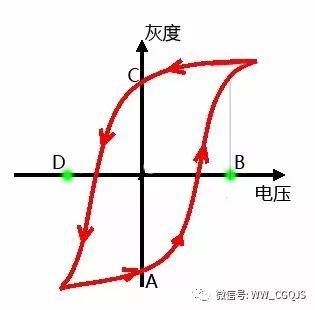
In the above figure, the horizontal axis is the voltage provided by the e-book, and the vertical axis is gray (assuming that it is the whitest and the negative is the blackest). The process of increasing the voltage and the process of decreasing, giving the same voltage, the degree of black and white of the electronic ink is different. This effect is called the bistable effect (hysteresis effect). Using this effect, we can give a positive voltage (from 0 to B, go up the route below), attract negative charges, show positive charge white to the reader, then power down (from B to 0, go above That route back)). White is maintained. Therefore, the e-book e-book saves power because the screen portion consumes zero power if there is no need to change the display.
Note 1: No change to the screen e-book itself is due to the standby consumption of the board and the battery's own internal resistance consumption;
Note 2: Other common displays No matter the screen content changes, the power consumption of the screen part is continuous, and the change is not big.
Why do every change (such as turning pages), or every time you need to have a clearing action? We just assumed that the voltage increases from 0 and then decreases to 0, but the gray level of the electronic ink changes from position A to position C. Then if the next change, if I reduce the voltage, that is, continue to walk along the above return path, there is no problem. But if the next refresh, I still need this pixel to display white, then the route followed by the ink at point C is not the same. The gray level corresponding to the voltage driven by the circuit will be inaccurate. The result is that the black ink is not black in color, and some of the white ink is not completely white. There will be ghosts, or afterimages. Therefore, in order to avoid the occurrence of afterimages, all of them are added to the maximum or minimum voltage, all the inks are cleared, and the adjustment is started from the initial state, so that all the ink balls can maintain uniform display of only two colors.
How the electronic ink screen works
"Electronic inks are mainly composed of a large number of tiny microcapsules, which are about the size of human hair. Each microcapsule contains positively charged white particles and negatively charged black suspended in a clear liquid. When the electric field is set to positive, the white particles move toward the top of the microcapsule and thus appear white. At the same time, the black particles are pulled to the bottom of the microcapsule and hidden. If an opposite electric field is applied, the black particles appear at the top of the capsule, thus appearing black. ."

It appears to the naked eye that electronic ink is like a bottle of normal ink, but there are millions of tiny microcapsules suspended in the electronic ink liquid. Inside each capsule is a mixture of dye and pigment chips, which can be charged by a charge. In order to see the microcapsules of the electronic ink, you can think of it as a clear plastic water polo. There are dozens of table tennis balls in the water polo, and the water polo is filled with not the air but the pigment water. If you look at the water polo from the top, we can see that many white table tennis balls are suspended in the liquid, so the water polo looks white. Looking at the water polo from the bottom, you only see the pigment water, so the water polo looks black. If you put thousands of water polo into a container and move the table tennis between the top and bottom of the water polo, you can see that the container is changing color. This is the basic principle of electronic ink work. In fact these water polo are 100 micron wide microcapsules. At 1 square inch, it contains about 100,000 microcapsules. If electronic ink is printed on one page, one sentence contains more than 30 microcapsules.
Electronic ink is a new material that is integrated with chemistry, physics and electronics. The manufacture of microcapsules itself involves only simpler chemistry and can be likened to salad dishes! After the microcapsules are made, they are called a gelatinous material. This material is a small solid particle that bears the physical properties of the liquid. The microcapsules are then suspended in a liquid "carrier" like a conventional ink, however it will stick to any surface that can be used with conventional inks. And can be printed using the existing screen printing process. Printed microelectronics technology changes the color of the ink particles and produces words and figures.
Electronic ink screen features
1. The electronic ink screen has two advantages: power saving and eye protection.
The electronic ink screen can continuously display the screen without power supply. Only when the screen changes, it needs to consume a small amount of power. For example, the Kindle can also display the screen when it is turned off, and the screen will only refresh when the page is turned. This feature will greatly reduce power consumption and is the reason for the long life of e-books.
The traditional LCD screen display principle is to use the backlight to emit light, which needs to pass through the display all the time and directly to the eyes. The electronic ink screen does not require a backlight, it is used on the display screen with ambient light and then refracted to the eye. This method simulates the characteristics of ink and paper. The stronger the ambient light, the clearer the display. Since there is no flicker, the eyes are not prone to fatigue when reading for a long time.
The electronic ink screen saves power and protects the eyes, making it the first choice for e-book readers. Sony and Amazon have successively introduced readers equipped with electronic ink screens. It has been 10 years since the release of the first generation Kindle, and the electronic ink screen has been 20 years old. Since its birth, many people have had high hopes for it, and believe that e-books will revolutionize the life of paper books, but until Today, e-books have never become the mainstream of the market, and electronic ink screens seem to have few obvious changes. The technology seems to have not made much progress.
2, low refresh rate, not suitable for mainstream equipment
E-ink screens do not gain more market share, mainly due to their own characteristics, one of the biggest limitations is the low refresh rate.
Compared with the mainstream LCD display, the electronic ink screen can display content without constantly refreshing, which reduces power consumption and reduces radiation, making the reading experience closer to paper and less likely to cause eye strain. But such features also make electronic ink screens unusable by mainstream electronic devices.
Regardless of whether it is a mobile phone or a computer, the screen needs to display a lot of content, and also needs to perform pop-up menus, window scrolling, etc., and the refresh rate of the electronic ink screen is obviously unable to meet such requirements. Compared with the LCD display, the electronic ink screen is more suitable for text display with simple content and less change.
Since the birth, the power-saving and eye-protecting features have made the electronic ink screen a standard for e-book readers, but it has also attracted a single question.
The main difference between E-link ink screen and LCD screen
Different principles
EInk is a display technology based on electrophoresis technology. The process of forming a picture by floating particles in a liquid capsule under the action of an electric field in a black and white color. After the screen is formed, the color particles stop moving and will not disappear even if the power is turned off. Therefore, when you turn to a page, the screen will not blink.
The working principle of the LCD liquid crystal screen is simply described by the voltage adjustment of the liquid crystal molecules in each fixed independent pixel to achieve the effect of displaying different colors and pictures. Since the liquid crystal molecules rely on the voltage sustaining state, continuous power supply is required to maintain the display. Therefore, the TFT is always in a blinking state, but the frequency is high and the naked eye cannot distinguish it.
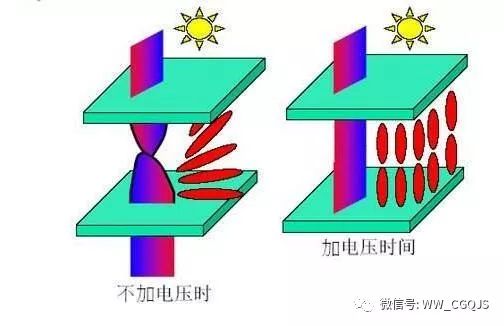
Different display mechanisms
EInk is totally reflective, which means that the effect will be different as the ambient light changes. The better the external light source, the better the display effect. So looking at the Eink e-book on a clear outdoor is almost the same as reading a paper book.
Because Eink relies on ambient light, when the ambient light is not good at night, the industry is currently solving the problem of night reading experience by adding light guides.
LCD LCD screens have backlights, so they are basically not affected by external connections unless extreme conditions (in summer outdoor sunlight). Therefore, there will be outdoors, the brightness of the screen of the mobile phone needs to be brightened to resist the occlusion effect of the ambient light on the screen display.
Afterimage problem
Due to the fixed state characteristics of the black and white particles in the Eink principle, it is easy to see the imprint of the black particles remaining on the previous page when reading the page turning. The industry commonly known as "afterimage", the screen merchant provides a refresh mode for restoring the initial state. That is the "splash screen" problem that everyone is familiar with. Similar to the process of reading a book in a paper book.
Since the LCD screen itself is constantly refreshed, there is no similar process.
Energy saving
Due to the characteristics of EInk, there is no need to consume power during the reading process, and only a small amount of power is consumed in the moment of turning the page. Therefore, the general use period of the e-book product is about 2 weeks or even a month.
Since the LCD screen always requires voltage to maintain the picture, basically the screen accounts for the main power consumption. At present, basically the use of smart phones is one day or one day.
in conclusion
Therefore, Eink has unparalleled reading advantages in reading text and non-color comics content, both in principle and in actual use:
1. Highly close to the reading experience of paper.
2, does not hurt the eyes, suitable for long time reading.
3, battery life is long, nearly one month.
But there are also some disadvantages:
1. At present, there are mainly black and white products, and the color is only three colors (black and white).
2 Limited by its principled problems, it is not possible to respond quickly to some animation class needs like a TFT screen.
3. The screen will flash during the refresh process.
E-link technology application
Since the birth, the power-saving and eye-protecting features have made the electronic ink screen a standard for e-book readers, but it also attracted a single question of application. In addition to the Kindle, the electronic ink screen does not seem to have other more suitable applications. .
E Ink's official emphasis on "more than Kindle" in Weibo seems to prove this anxiety. Over the years, e-ink screens have also begun to appear in other devices, such as cell phones.
During the 2014 APEC Summit, Russian President Vladimir Putin used a YotaPhone 2 as a national gift, and this mobile phone received a lot of attention. YotaPhone's biggest feature is the electronic ink screen on its back, the unique double-sided screen design and the "National Gift" aura make it one of the most "bright" phones of the year. Recently, Yota launched the third-generation mobile phone YOTA3, which is equipped with an E Ink electronic ink screen, which can save power and protect the eyes when reading text. This screen can also run some apps independently.
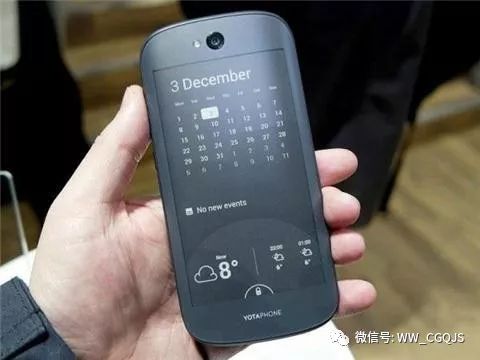
The screen is the big power consumption of mobile phones. The reading experience of Kindle and paper books has long been seen by many users. The emergence of YotaPhone has made many people see new business opportunities and began to try to combine electronic ink screens with mobile phones. Taking advantage of the popularity of YotaPhone, Huawei P8 launched an electronic ink screen phone case simultaneously. InkCase, which specializes in electronic ink screen mobile phone case accessories, has also appeared abroad.
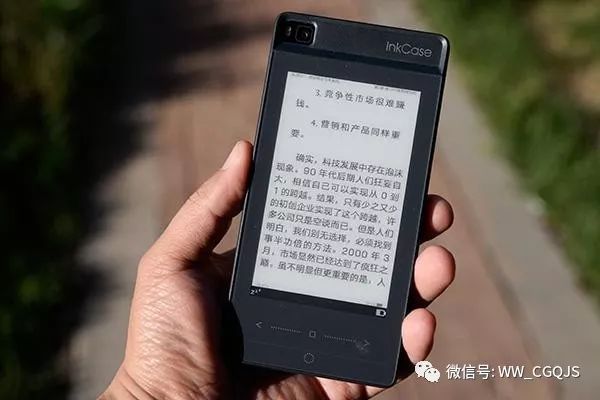
However, the combination of electronic ink screen and mobile phone is more like a rich market topic, far from technical innovation. The electronic ink screen is only a supplement, and the screen of the mobile phone is still based on practicality.
In contrast, the attempt to use an electronic ink screen on a watch is more like an innovation. The display of the watch is small, the cost is controllable, and the screen needs to display less content, which is consistent with the positioning of the electronic ink screen. The most eye-catching in this field is FES Watch. At the 20th anniversary of Sony's announcement, Sony announced that the FES Watch, which is made entirely of flexible E-ink screens, will be available in limited quantities in China. Its dial and strap are made from a single flexible E Ink screen with no breakpoints and a great design. Since only black and white can be displayed, it only has one function for displaying time. Due to the special nature of the E Ink screen, the standby time of FES Watch can theoretically reach 2 years.
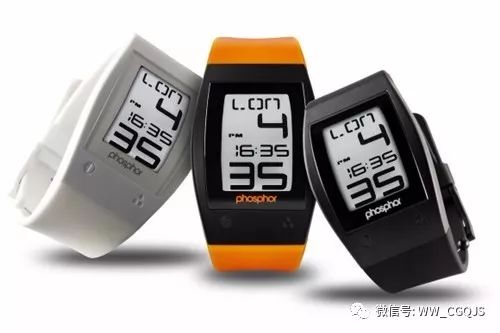
Although these applications have jumped out of the limitations of e-book readers, they are still the application of the original features of electronic ink screens. In fact, e-ink screens have been trying new technologies to break through their limitations.
The future of E-link technology: replacing paper, replacing printing
In the past 2017 Smart Display and Touch Exhibition, E Ink exhibited color electronic paper ACeP. The traditional electronic ink screen can only display black and white, while the color electronic paper extends the traditional electrophoretic microcapsule technology. The black and white particles are gray-scale and black-and-white by the electric field change. On this basis, the color filter is covered, and the black and white particles are converted into RGB colored particles to display a color picture. In addition to the 16-gray black and white display, E Ink's color e-paper display offers 4096 colors.

In addition to color electronic paper that breaks through color limitations, E Ink also demonstrates technical applications such as 84-inch spliced ​​electronic paper display panels, collapsible electronic paper, and electronic paper notebooks with handwriting capabilities.
Whether it's color electronic paper or collapsible electronic paper, E Ink's attempts are to try to jump out of the traditional electronic ink screen, but from some practical applications we can also see that the mission of electronic ink screen is not to replace the ordinary The display, mainstream electronics is not its main battlefield. The future application of the electronic ink screen should be in places where it is necessary to change the traditional display mode. For example, the three-color electronic paper display replaces the retail product label, which can dynamically change the display content and help the retailer to improve the marketing strategy in time. These areas, which were previously displayed on traditional paper and now require more flexibility to display more content, are the future direction of the electronic ink screen.
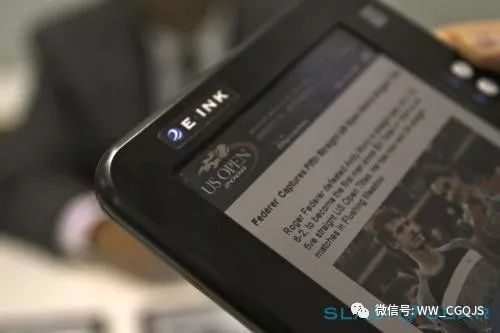
The Kindle has been born for 10 years, and the e-ink screen has appeared for 20 years. For a technology that is already "mature", the mission is no longer to find more application scenarios, but to use technology innovation to create more. demand.
Flat Wire Common Mode Inductors
Flat Wire Common Mode Inductors,Vertical Low Profile Common Mode Inductors,Horizontal Flat Wire High Current Inductor,Flat Copper Wire Common Mode Inductors
Shenzhen Sichuangge Magneto-electric Co. , Ltd , https://www.scginductor.com